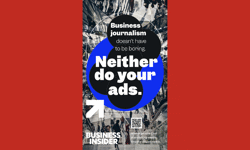
With Incisive Media’s return to independent, private ownership following a management buy-out in April, a new chapter in the company’s 23-year history began in 2017. Yet despite a refocusing of the business, a move to new premises and a corporate rebranding in recent months, CEO Jonathon Whiteley insists that the founders’ belief in what it takes to build a successful business-to-business information and events business remains unchanged.
Incisive Media’s story so far has been as well-documented as it has been eventful.
Roller coaster ride
The business was founded in 1994 by Executive Chairman Tim Weller to launch Investment Week, which first appeared in January 1995. Over subsequent years, it swiftly transitioned from single title start-up to stock exchange listing followed by rapid expansion, sizable debt, private equity investment and a return to private ownership – in 2006 and then, again, earlier this year.
Significant acquisitions along the way included Timothy Benn Publishing, MSM International, UK publishing business VNU Business Publications Ltd, and American publisher ALM. But there were significant divestments, too – also including ALM which, by then once more independent, bought Legal Week from Incisive last year.
Other recent disposals, meanwhile, include its energy exhibition business – sold to Clarion, private equity publishing business AVCJ and Unquote – to Mergermarket Group, and the Insight Division (including the Risk.net and Insurance Post brands) which Incisive sold to French B2B publisher Infopro Digital in the run up to this spring’s MBO.
“What led us to where we are today, was the realisation that like every other B2B – large B2B businesses, especially – we can see investors and the markets prefer very focused, vertically integrated B2B assets with a very clear business model,” Whiteley says.
Less is more
In short, co-mingled large groups being everything to everyone in twelve different vertical markets just don’t attract the same excitement from investors they once did, he explains: “The MBO was an opportunity to return value to investors. But it was also an opportunity to re-group in a way that was strategic and closely in tune with these principles.”
Looked at one way, Incisive Media has gone back to its retail financial roots with Investment Week and Professional Pensions two of its four ‘hero brands’. Computing and CRN (formerly Computer Reseller News) are the other two. But the paring down has been more strategic.
“We are now focused on two vertical markets – tech and financial, and a further two sub-verticals within each,” Whiteley observes.
In tech, Incisive now publishes to chief technology officers and chief information officers, and to the intermediaries or re-sellers enterprises tend to buy technology from. Its other tech brands include global IT reseller channel website Channelnomics, IT site TheINQUIRER and green business information site BusinessGreen.
In financial, meanwhile, it publishes to the institutional pensions market (where the audience is trustees, scheme managers and advisors) and to financial advisors and wealth managers. Its other financial services brands include Retirement Planner and also Cover, focused on protection and health insurance. And its Workplace Savings and Benefits brand brings together employee benefit, human resource and finance directors in a single forum.
Each vertical meets the founders’ criteria for a good B2B business strategy, he continues. Namely, they are large, they are characterised by a big information need, they are regulated (which creates what Whiteley calls “a crunch point” for information), they are dynamic and they lack structural challenges.
What happens within each vertical may shift, but fundamentally these markets are set, he adds: “While the way tech is bought or sold might change, the need for tech won’t. There’s enough risk in business without having it bedded into your end markets.”
Marketing solutions
While Incisive’s business principles stand firm, other aspects of the company’s day to day activities are changing, however.
Today, some 80% of the company’s revenues come from its clients’ marketing budgets and just 20% from their information budgets, with events, digital and print accounting for a share of 45%, 45% and 10%, respectively. Moving forward, the hope is that with its new pared-down structure and greater clarity of vision, Incisive will be better-positioned to respond as industry trends and associated opportunities (and challenges) change.
Take brand owners’ shifting interest away from conventional advertising and towards integrated marketing solutions: known by Incisive as ‘content and performance marketing’.
“People do still advertise with us but advertising is usually part of a wider piece of work, buying an integrated package of marketing services that's more focused around content, more platform-agnostic and far more performance led – in other words, driven by our ability to deliver results,” says Whiteley.
“It’s all about our ability to create content for a client that then goes on to enable that client to create engagement with a user and generate a lead that can then be delivered directly into their CRM system, so the tech we now have here enables us to deliver that.”
Inevitably, this has had a knock-on effect on staffing.
“We have fewer sales people than we had five to ten year ago, but more project managers and campaign support and campaign management teams and product managers because so much more now is about delivery and making sure delivery is accurate and fulfils what the client has bought,” he adds.
“Those sales people that we do have, however, are better qualified in the sense they are far more able to really manage campaigns and projects long term and understand and engage with their clients’ overall marketing needs.”
The growth of content and performance marketing has also impacted on the role of journalism within the business making it even more important, in all its formats – video, live events, infographics and so on as well as the written word.
“What we have and what’s more important than ever is high engagement, high touch points and a very loyal, very defined audience. You can only achieve that by creating content that is engaging and unique and thoughtful. And journalists are the only people we believe who can do that well,” Whiteley says.
“Only once you’ve built the industry watering hole can you start to think how to build services to monetise that audience. And what separates us as a B2B publisher from agencies and clients themselves, I think, is the independence and the quality and the veracity of our journalism.”
Subs driven
Maintaining a commitment to quality journalism is also critical for another priority growth engine for the business: subscriptions.
Incisive now has two subscription products – Professional Pensions and sustainability brand BusinessGreen – with an emphasis on selling enterprise subscriptions based on the number and level of engagement of users. And again, while the aim of growing subscriptions remains constant, the means of doing so is shifting.
Maximising subscriptions potential depends on quality content. But increasingly important are analytics and active account management to understand not just how users use the products but how to encourage them to use the products more effectively in a way that adds value to that subscription to both sides, over time.
Moving forward, Whiteley says, Incisive is likely to develop new subscription products and – as and when it looks to make further acquisitions – he anticipates they will seek opportunities where paid content is part of the revenue mix.
“Our subscription business today is smaller than when we were a larger company, but it’s an important and growing part of the business. Looking ahead, paid content and events are the future of B2B media,” he observes.
Incisive’s other growth engine is its events business. And, again, Whiteley is confident the company is now better-positioned to respond to shifts in demand to build this part of the business further post-MBO.
“Events have performed well for us this year, and what’s interesting is the changes we are now seeing in the marketplace,” he says, explaining that though at an industry level, increased pressure on corporate budgets is hitting demand for tables at awards, events-based revenue streams at Incisive are diversifying.
“We are far more focused now on building licensing revenue around events with winners and shortlistees paying for marketing packages to promote their achievements, which ranges from paying a small amount of money to use an event’s logo to buying an involved marketing package of bespoke content to promote their win,” Whiteley continues.
“The opportunity is to become more sophisticated in our approach and in tune with what marketers want rather than simply force the same old business model on them.”
Significant potential lies in re-energising existing events as well as developing events both overseas and in Incisive’s existing verticals where recent new additions to the portfolio include the Women in Technology and Women in Investment awards. Meanwhile, the company is working with a growing number of clients wanting bespoke events.
“Being invited to an event by a tech supplier solely to hear them talk about their own products is not very exciting. But if we can wrap that into a bespoke event with independent research and external speakers and associated editorial content before during and after, then that becomes much more compelling,” Whiteley continues.
“We have the platform, the professionals, the connections and the capacity to do so along with an audience of the right people who will only come when an event is relevant and compelling. What we offer is a total events service but, also and crucially, independence and editorial excellence.”
Organic growth in events, subscriptions and content and performance marketing, with acquisitions where appropriate, will be key priorities for Incisive over the next three to five years. But as important, Whiteley says, will be achieving on softer goals, too.
“It is important – and always has been – for us to be an employer of choice, and we are proud of our low staff turnover,” he observes. And an important aspect of this is company culture. “Cultivating a sense of inclusivity is important to us. As is the sense among staff that they are not just contributing to the bottom line but to the greater good.”
Moving forward, Whiteley adds, the business will also encourage its people “to have a go” and “push things” in order to learn – something else that’s harder to do when you’re in the eye of the public, reporting every three months to the city. “Becoming better at being innovative and flexible will make us better able to change according to what’s needed,” he believes. “And everyone must find a way to be adaptive to that.”










